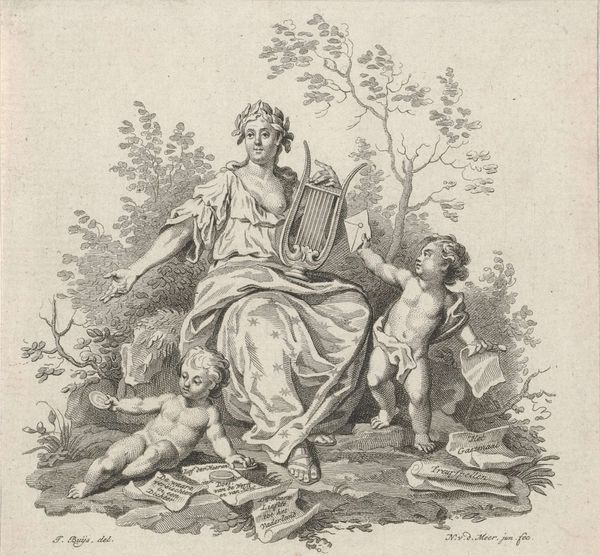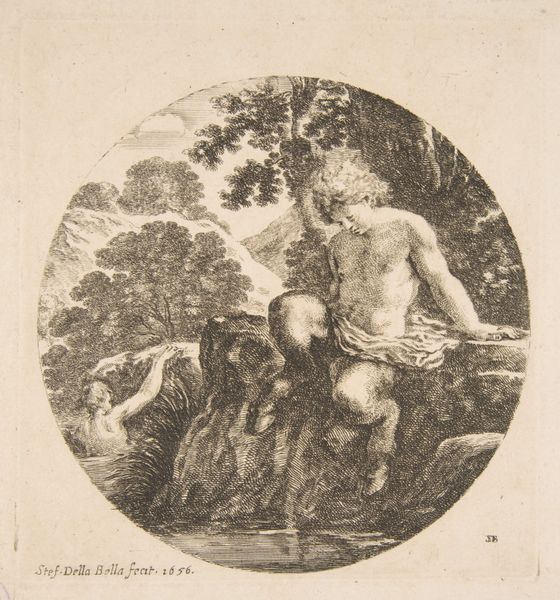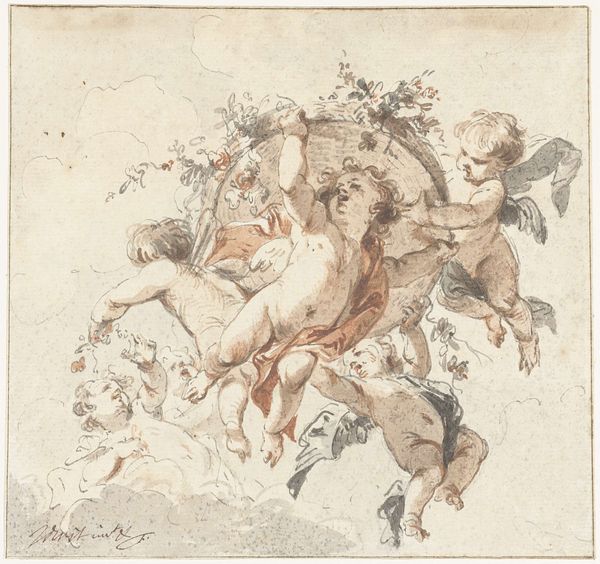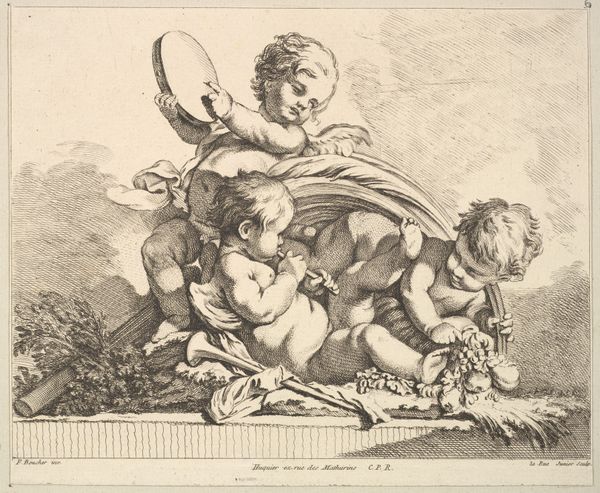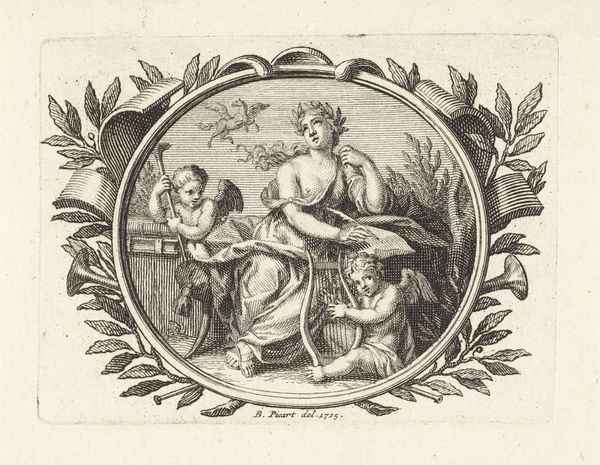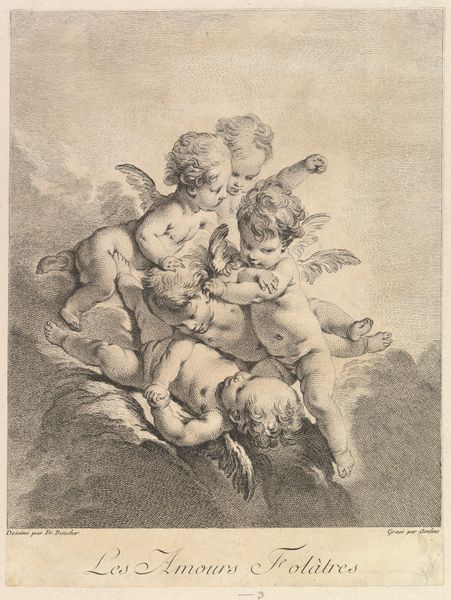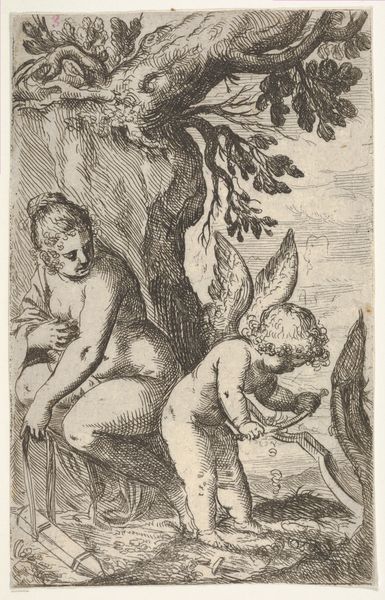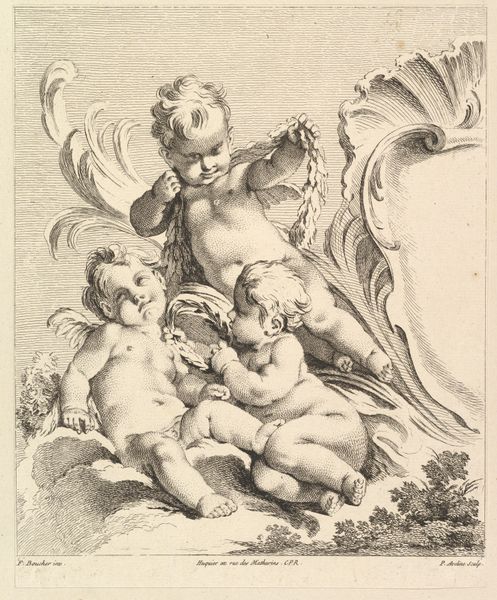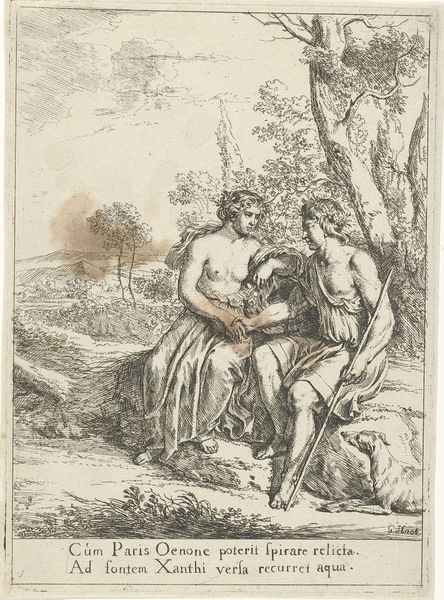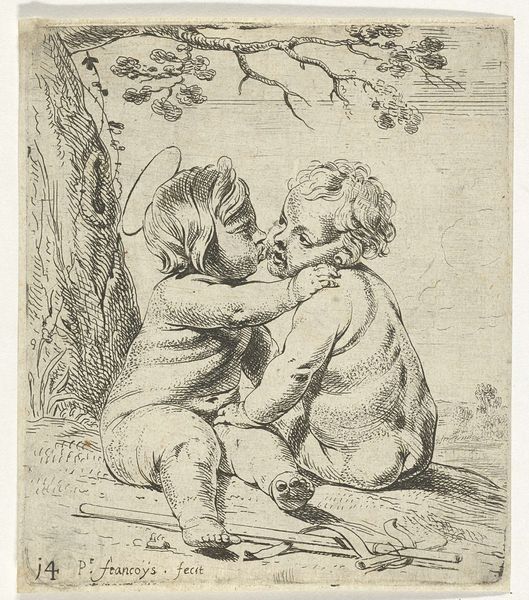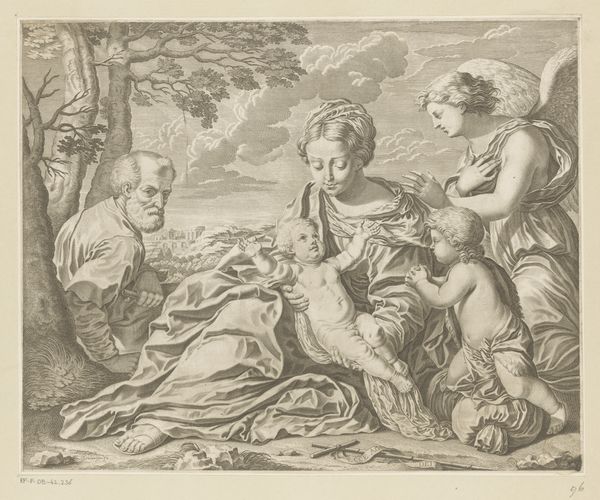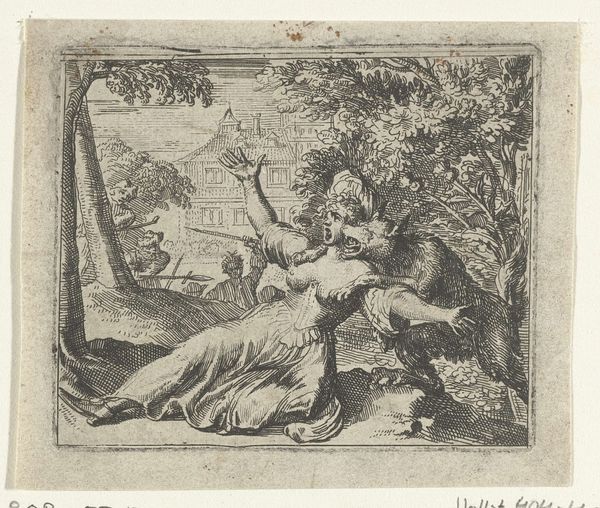
print, engraving
#
allegory
#
baroque
# print
#
classical-realism
#
figuration
#
genre-painting
#
engraving
Dimensions: height 54 mm, width 70 mm
Copyright: Rijks Museum: Open Domain
Curator: Here we have "Vignet met twee putti", a print created by Simon Fokke sometime between 1722 and 1784, currently held at the Rijksmuseum. What are your initial thoughts? Editor: It feels surprisingly delicate. The etched lines create a softness, an almost ethereal quality that’s unexpected given the classical subject matter. There is a palpable sense of tranquility in its carefully rendered composition. Curator: The baroque influence is clear in the figuration of the putti. One holds a trumpet, almost announcing something, while the other is playing a lyre. Look closely and we can consider the social function of the image; was this made for the book trade, and how might Fokke's method democratize art to broader markets? Editor: Focusing on the immediate visual experience, observe how the curves and lines echo each other, the soft curves of the figures repeated in the wisps of clouds, the foliage, the architectural details. It's all carefully balanced. Also, consider how Fokke has created a wonderful illusion of depth within this limited medium. Curator: And, as a vignette, it would likely have been part of a larger work. Considering the allegory inherent to depictions of putti, what kind of themes do you suspect this was created for? Was this a comment on music, fame, perhaps a grander moral narrative? Editor: One cannot dismiss the potent symbolic nature of this scene: Music, fanfare, the garland wreath suggesting victory, or honour, or love—all these interact to construct a message about worldly and cultural ascendancy. We might find here a study into ideals—aesthetic ideals made physical. Curator: Absolutely. Knowing that these types of engravings could be reproduced on a mass scale, allows us to consider that the ideas—even if classical—are becoming increasingly accessible. Editor: That makes me think again about the interplay between the concrete materials - the etching plate, the paper, and ink – and the abstract ideal that the artist seeks to embody through those very materials. The tangible supporting the ethereal, maybe. Curator: A fascinating interplay to ponder further. Thanks for sharing your insights! Editor: And thank you for elucidating its material context!
Comments
No comments
Be the first to comment and join the conversation on the ultimate creative platform.

